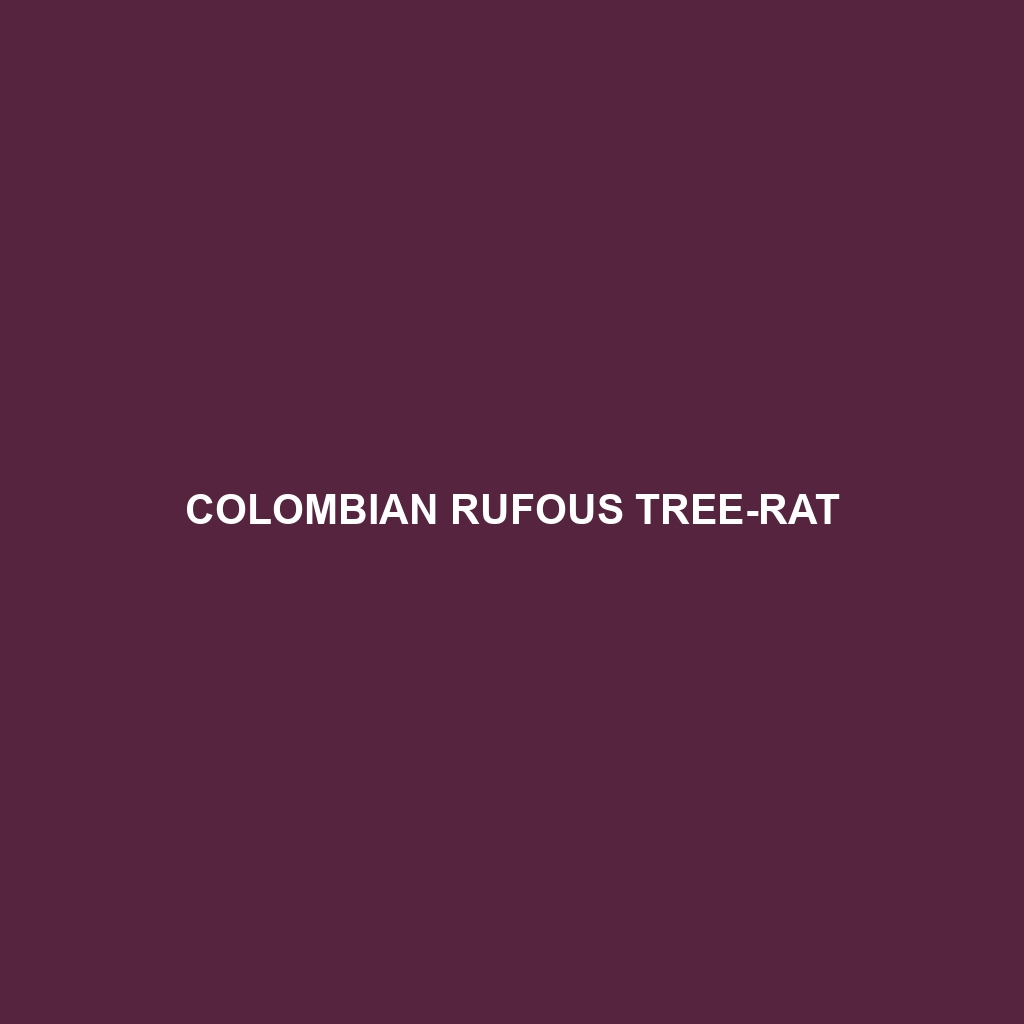Discover the fascinating White-faced Tree-rat, a nocturnal rodent native to the tropical forests of South America. With its distinctive facial markings and arboreal lifestyle, this species plays a vital role in seed dispersal and forest regeneration while facing threats from habitat destruction. Explore their unique behaviors, diet, and conservation status in our in-depth blog post.
Tag: conservation
Colombian Rufous Tree-rat
Discover the remarkable Colombian Rufous Tree-rat (*Diplomys vancouveri*), a unique arboreal rodent native to Colombia's vibrant rainforests. With its striking reddish-brown fur and nocturnal habits, this vulnerable species plays a vital role in its ecosystem as a seed disperser while facing threats from habitat loss. Learn more about its intriguing behavior, diet, and conservation efforts aimed at preserving this fascinating creature.
Cayman Hutia
Discover the fascinating Cayman Hutia, an endangered rodent native to the lush forests of the Cayman Islands. With its unique adaptations, crepuscular behavior, and vital role in seed dispersal, this medium-sized herbivore contributes significantly to its ecosystem while facing threats from habitat loss and predation. Explore its characteristics, diet, and conservation efforts in our latest blog post.
Guaymallen Tuco-tuco
Discover the Guaymallen Tuco-tuco, a unique burrowing rodent native to the arid landscapes of western Argentina. With its impressive digging abilities, vibrant lifestyle, and crucial role in soil aeration, this vulnerable species faces increasing threats from habitat loss. Learn about its fascinating behaviors, dietary habits, and the urgent conservation efforts needed to protect its future.
Monte Tuco-tuco
Discover the fascinating Monte Tuco-tuco, a medium-sized rodent native to the mountainous regions of South America. This nocturnal creature is known for its intricate burrow systems and herbivorous diet, playing a critical role in its ecosystem. Learn about its habitat, physical characteristics, behavior, and conservation status in our comprehensive blog post.
Yates’s Tuco-tuco
Discover the fascinating world of the Yates's Tuco-tuco, a unique rodent native to the grasslands of Argentina. With its impressive burrowing skills and vital role in the ecosystem, this endangered species faces significant threats from habitat loss. Learn about its behaviors, diet, and conservation efforts to protect this remarkable creature.
Colonial Tuco-tuco
Explore the fascinating world of the Colonial Tuco-tuco, a social rodent native to the grasslands and shrublands of South America. Discover their unique burrowing behaviors, diet consisting of roots and grasses, and their critical role as ecosystem engineers in maintaining soil health. Learn about their vulnerable conservation status and the efforts needed to protect their declining habitats.
Talas Tuco-tuco
Discover the fascinating Talas Tuco-tuco, a unique rodent native to Kyrgyzstan's Talas Valley, renowned for its bicolored fur and intricate burrowing systems. This vulnerable species thrives in grasslands, playing a crucial role in soil aeration and nutrient cycling, while its social behavior and vocalizations add to its intrigue. Learn about their habitat, diet, reproduction, and conservation efforts to protect this remarkable creature.
Rondon’s Tuco-tuco
Discover the fascinating world of Rondon's Tuco-tuco, a medium-sized rodent native to Brazil's savannahs, characterized by its impressive burrowing skills and herbivorous diet. With its vulnerable conservation status due to habitat loss, learn about its unique behaviors, social structure, and essential role in the ecosystem as both a seed disperser and a key food source for predators. Join us as we explore the life and challenges facing this remarkable species.
Rosendo Pascual’s Tuco-tuco
Discover the fascinating Rosendo Pascual's Tuco-tuco, a unique rodent native to the southern Andes of Argentina. With its remarkable digging abilities, herbivorous diet, and vital role in seed dispersal, this endangered species faces challenges from habitat loss due to agricultural expansion. Learn about its distinctive adaptations and behaviors that make it an essential part of its ecosystem.








